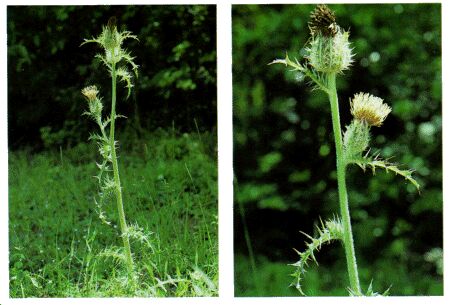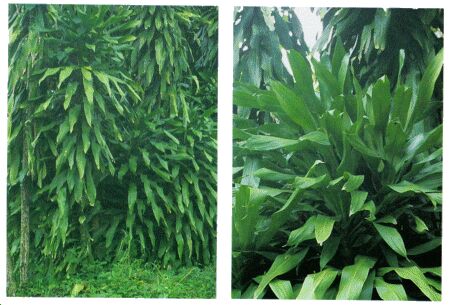 |
 |
 |
 |
| APPENDIX B |

Description: This plant may grow as high as 1.5 meters. Its leaves are long-pointed, deeply lobed, and prickly.
Habitat and Distribution: Thistles grow worldwide in dry woods and fields.
Edible Parts: Peel the stalks, cut them into short sections, and boil them before eating. The roots are edible raw or cooked.
|
CAUTION
Some thistle species are poisonous. |
Other Uses: Twist the tough fibers of the stems to make a strong twine.

Description: The ti has unbranched stems with strap like leaves often clustered at the tip of the stem. The leaves vary in color and may be green or reddish. The flowers grow at the plant's top in large, plume like clusters. The ti may grow up to 4.5 meters tall.
Habitat and Distribution: Look for this plant at the margins of forests or near home sites in tropical areas. It is native to the Far East but is now widely planted in tropical areas worldwide.
Edible Parts: The roots and very tender young leaves are good survival food. Boil or bake the short, stout roots found at the base of the plant. They are a valuable source of starch. Boil the very young leaves to eat. You can use the leaves to wrap other food to cook over coals or to steam.
Other Uses: Use the leaves to cover shelters or to make a rain cloak. Cut the leaves into liners for shoes; this works especially well if you have a blister. Fashion temporary sandals from the ti leaves. The terminal leaf, if not completely unfurled, can be used as a sterile bandage. Cut the leaves into strips, then braid the strips into rope.
| Updated: 12 January 2008 |
|
Born on 09 January 2000 |